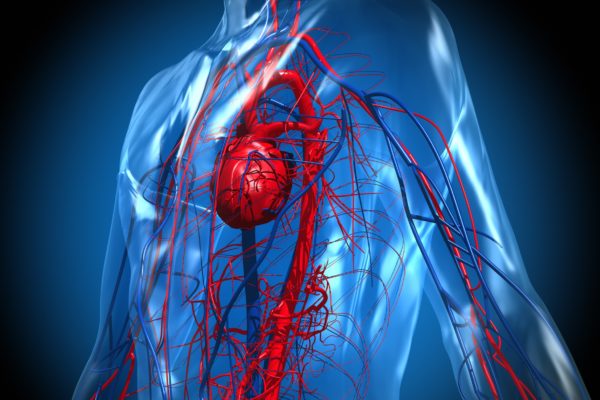
Chordoma Foundation
A sarcoma is a cancer that arises from transformed, malignant cells of the connective tissue. Thus, malignant tumours made of cancellous bone, cartilage, fat, muscle, vascular, or hematopoietic tissues are, by definition, considered sarcomas. This is in contrast to a malignant tumour originating from epithelial cells, which are termed carcinoma.
Sarcomas are not always identified as cancer because the associated symptoms are very similar to sporting injuries or benign tumours. The diagnosis of sarcomas is further hampered by their comparative rarity. Over 50 types of sarcoma are recognised, varying in original location.
During the early stages of development, sarcomas do not present any symptoms. These will occur once the sarcoma has grown to a certain size and begins to exert pressure on an organ, nerve or muscle. Since sarcomas develop within soft tissue they can grow to a considerable size before patients become aware of them.
Given the large number of sarcoma types, it’s not possible to define symptoms that occur in all of them. Each type of sarcoma comes with its own set of symptoms.
It is yet unknown what causes sarcomas to develop, but certain risk factors have been identified.
In some cases, patients have a genetic predisposition to develop cancer. Due to a fault in their DNA, these patients run a larger risk of developing cancer. This concerns neurofibromatosis type I (Von Recklinghausen’s disease). Patients with this condition have a mutation in the NF1 gene, a gene that is associated with suppressing tumorous growths. As a result, these patients have a higher chance of developing tumours, both benign and malignant.
Ionizing radiation and certain chemicals also enhance the risk of developing sarcomas. In some patients who have undergone radiotherapy for cancer treatment, a sarcoma can develop later in life in the location of the radiation. Certain pesticides can cause sarcomas to develop, as well as arsenic. People who have worked with these chemicals run a higher risk of contracting cancer.
A GP may not immediately recognise his patient may be suffering from a sarcoma, due to the rarity of the disease. When alternative treatments and physiotherapy bring no result, the patient will be referred to a specialist or a specialised hospital.
A blood test will establish the general condition of the patient, and the liver and kidneys will also be checked. A radiological test will establish whether there is an active tumour or not. X-rays, CT scans and PET scans bring more information about location, stage and spreading of the tumour. A biopsy will confirm the diagnosis.
In order to come up with a treatment plan, specialists need to know exactly what kind of sarcoma they are dealing with, where it originates and whether it has metastasised. The cancer will also be classified in one of four stages of development. These four stages are:
In some cases sarcomas do spread, occurring in approximately 10% of all patients. Spreading mostly occurs into the lungs, and sometimes the liver, bones or lymph nodes.
The differentiation of the tumour is also an important factor in establishing a prognosis and optimal treatment strategy. This can be determined on the basis of a biopsy. A biopsy involves the removal of a small bit of tissue that can be examined under a microscope. Differentiation determines the degree of mutation in the cancerous cells.
Soft tissue tumour
A localised soft tissue tumour will almost always be surgically removed. When the cancer is in an advanced stage, surgery can be combined with radiotherapy. Radiotherapy is also administered when the tumour has spread. A sarcoma in one of the limbs can be treated with regional perfusion. This involves isolating the limb from the blood circulation and administering a high dose of chemotherapy. This treatment is meant to spare the limb from invasive surgery or even amputation. Since sarcomas are such rare cancers, treatment generally only takes place in a few hospitals.
Sarcoma in the bone
Treatment for patients with a sarcoma in the bone (osteosarcoma) will almost always include chemotherapy, followed by surgery. Radiotherapy rarely forms part of the treatment since osteosarcomas are not very susceptible to radiotherapy.
Different types of sarcoma
Angiosarcoma
An angiosarcoma is an unbridled growth of cells within blood vessels or lymph nodes that eventually develops into a tumour. When they occur in a blood vessel they are known as hemangiosarcomas, when they are found in lymph nodes they are known as lymphangiosarcomas. They can occur throughout the body but predominantly occur on the skin (cutaneous angiosarcoma), the head or the face. This condition mainly affects elderly patients.
Uterine sarcoma
When a sarcoma develops in the muscles or connective tissue of the uterus, it is called uterine sarcoma. This type of cancer makes up 5% of all uterine cancers.
There are three types of uterine sarcoma:
Symptoms of uterine sarcoma include heavy blood loss, post-menopausal bleeding, vaginal swelling, abdominal pain and frequent urge to urinate.
Risk factors for uterine sarcoma include a previous use of the medicine tamoxifen in breast cancer patients, as well as having a history of pelvic radiation.
A uterine sarcoma may be diagnosed as a result of:
In some cases, women are treated with hormone therapy on top of possible surgery, chemotherapy and/or radiotherapy. Uterine sarcomas are sensitive to the hormone progesterone and this can stop the tumour from developing. Around 30% of uterine sarcoma patients benefit from hormone therapy.
Chordoma
A chordoma is a very rare form of bone cancer, that develops from the cells of the chorda dorsalis, an organ that is only present in the developing spine of embryos. In some adults, cells of this chorda dorsalis remain and these can turn cancerous over time.
A chordoma can occur anywhere along the spine, but each location brings its own set of symptoms. Chordomas only start causing symptoms after they have developed to a certain size. Symptoms often include pain and numbness in arms or legs.
Chondrosarcoma
If a tumour develops from cells that form cartilage, it is called a chondrosarcoma. These usually occur in the upper arm, the upper leg or the rib cage and are most often found in patients between the ages of 50 and 70. Two main types of chondrosarcomas are distinguished:
Chondrosarcomas rarely present symptoms and are most often found by accident. Certain risk factors are associated with chondrosarcomas. These include Ollier’s disease, Maffucci syndrome, hereditary multiple exostoses or Paget’s disease.
Chondrosarcomas do not respond to chemotherapy or radiotherapy and are usually treated by surgical means. Given the non-spreading nature of this condition, the patient’s outlook is generally favourable.
Desmoids
Desmoids are benign growths from fibroblast cells in connective or muscular tissue. Even though it is a benign non-spreading tumour, it does behave aggressively and can cause damage to surrounding tissue. Desmoids can occur everywhere in the body, and it is estimated that 2 to 4 people per million are diagnosed with this condition annually.
Initially, desmoids cause little or no symptoms, but this changes when the growing tumour begins to impair blood vessels or nerves. Even though desmoids aren’t technically cancers, they are still treated as such by oncologists.
Risk factors include having scar tissue, a gene mutation of the APC or CTNNB1 gene and familiar adenomatous polyposis (FAP). When family members have desmoids, this can also mean a higher risk for relatives.
Ewing sarcoma
Ewing sarcoma is a rare cancer of the bone, most often the pelvis, ribs, femur, tibia or upper arm. Occasionally, this tumour grows from connective or muscular tissue. This type of cancer spreads in one in every four cases, mostly to other bones, the bone marrow or the lungs. Ewing sarcoma is often found in children and hardly ever in patients over 30 years old. The outlook for children is considerably more positive than for adults.
Symptoms include pain in the bone, mostly at night, and impaired mobility of the joint. Also, because the bone strength is weakened by the tumour, bones may fracture more easily.
Gastro-intestinal stromal tumour (GIST)
GIST is a rare type of cancer that develops in the lining of the stomach and the intestines. It is most prevalent in the stomach and the small intestine and occurs less frequently in the colon, rectum, oesophagus, abdominal cavity or lungs.
Most GIST tumours present a mutation in the KIT gene that causes cells to multiply and grow uncontrollably.
Patients with GIST will not experience symptoms until the tumour has grown to an advanced stage. By the time a patient becomes aware of abdominal pains and anaemia, the tumour may already have spread. This happens most frequently with the liver.
Given that GIST is a rare condition, and that the treatment for which is very complex, a patient will usually end up in a highly specialised cancer hospital. GIST is usually treated with a mixture of chemotherapy and surgery. Radiotherapy seems to have little or no effect on GIST tumours.
Kaposi’s sarcoma (KS)
Kaposi’s sarcoma is a rare type of cancer that usually occurs on the skin or on mucous membranes. The disease manifests itself in the shape of one or more brown or purple spots and lesions. Kaposi’s sarcoma is generally spotted quite early and is very treatable.
Many of the patients diagnosed with KS are people with aids, since the HHV-8 virus causes the illness. In people with a compromised immune system, this virus can cause KS. The spots and lesions are not painful but look very conspicuous. When KS occurs within the mouth, the spots can cause pain and bleed during eating.
If the cancer is caused by a compromised immune system, doctors can opt to boost the immune system. In some cases this causes the tumour to shrink or even disappear. If this doesn’t work, chemotherapy or radiotherapy can be offered. Surgery is not a common procedure in the treatment of KS, but cryotherapy (freezing cancerous cells with liquid nitrogen) is.
Leiomyosarcoma
Leiomyosarcoma is a rare type of cancer that affects smooth muscle tissue. These tumours are most common in the abdomen, but can occur anywhere in the body, including the uterus. Other common sites include blood vessels and skin. Leiomyosarcoma can also affect large blood vessels, particularly the veins that carries blood from the lower part of the body back to the heart (inferior vena cava) and the artery that carries blood from the heart to the lungs (pulmonary artery).
There are three subtypes of leiomyosarcoma: in the skin, in arterial walls and in soft tissue. Uterus sarcomas form a special type of leiomyosarcoma.
Leiomyosarcomas don’t always cause symptoms, other than a painless lump that keeps on growing. The location of the tumour determines the nature and severity of the symptoms. Patients with a leiomyosarcoma in the abdomen may experience weight loss and nausea. People who carry the tumour in their blood vessels can be affected by thrombosis or lymphoedema.
A leiomyosarcoma on the skin can be surgically removed and is therefore reasonably curable. Other types are more aggressive and pose a greater risk to the patient, and may already have spread at the moment of diagnosis. The outlook greatly depends on how the patient responds to treatment.
Liposarcoma
When fat cells show spontaneous and uncontrolled growth, this is known as a liposarcoma. These sarcomas can develop everywhere in the body, but they mostly occur in the thighs or in the retroperitoneum, the cavity behind the peritoneum. Tumours can grow around the kidneys, adrenal glands, the duodenum, the pancreas and the colon or along arteries in this area. Liposarcomas are usually found in patients between the ages of 40 and 60 and occur more frequently in men than in women.
There are four types of liposarcoma, each with its own unique characteristics and behaviours.
The risk of recurrence and metastasis with liposarcoma increases with higher grade.
Malignant peripheral nerve sheath tumour
A malignant peripheral nerve sheath tumour, also known as MPNST or malignant schwannoma, occurs in the Schwann cells that surround the nerves. Schwann cells play a role as impulse conductors and also act as protection to the nerves. MPNST mostly affects the limbs, but can occur anywhere. This type of sarcoma can spread and does so usually towards the lungs or the bones.
Because MPNST causes a lump to grow against a nerve, patients often experience nerve pains as a symptom. The outlook for MPNST is best when the tumour can be surgically removed, but this type of cancer does come with a high recurrence risk in 40 to 65% of all cases.
Undifferentiated pleomorphic sarcoma
Undifferentiated pleomorphic sarcoma (UPS), formerly referred to as malignant fibrous histiocytoma, is a type of soft tissue cancer. The word ‘undifferentiated’ in undifferentiated pleomorphic sarcoma means that the cells don’t resemble the body tissues in which they develop. The cancer is called pleomorphic because the cells grow in multiple shapes and sizes. This also makes UPS particularly hard to diagnose.
Symptoms vary according to the location of the tumour. If they are near a joint or a bone, they can cause impaired mobility or even fractures. Patients with UPS in a bone receive the same treatment as a patient with an osteosarcoma. If the tumour is found in connective tissue, treatment is provided similarly to other soft tissue cancers.
Rhabdomyosarcoma
Rhabdomyosarcoma (RMS) is a rare cancer that forms in soft tissue – specifically skeletal muscle tissue – or sometimes in hollow organs such as the bladder or uterus. RMS can occur at any age, but it most often affects children. Although RMS can arise anywhere in the body, it’s more likely to start in the head and neck area, urinary system (such as the bladder), reproductive system (such as the vagina, uterus or testes) or in the arms and legs. There are two types: embryonal rhabdomyosarcoma (eRMS) and alveolar rhabdomyosarcoma (aRMS). In 90% of cases the diagnosis is eRMS, and it most often involves patients under 21 years old. RMS is a very aggressive cancer that spreads rapidly.
Synovial sarcoma
Synovial sarcomas occur in the soft tissue that surrounds bones and organs. This rare type of cancer is usually fast-growing and aggressive. Although people of all ages can be affected, this type of cancer is most often found in children. The tumour needs to be quite large before it gets discovered, which explains the relatively poor outlook.
Targeted therapy is an area of active research, with regards to sarcoma. Therapeutic agents under current investigation includes angiogenesis, kinase and HER2 inhibitors, as well as ligand-targeted therapy.






